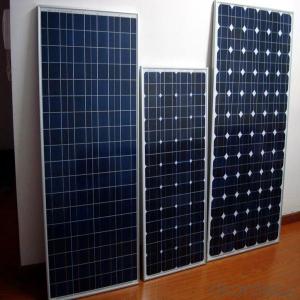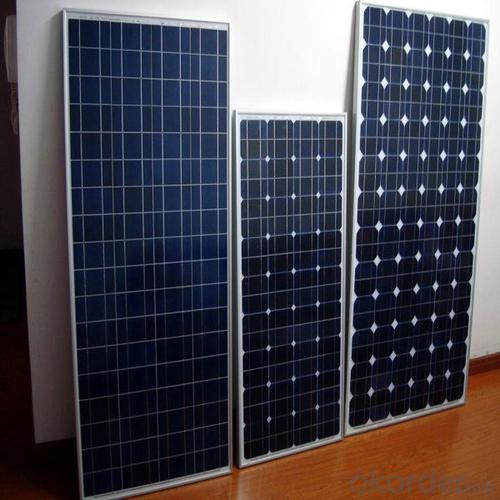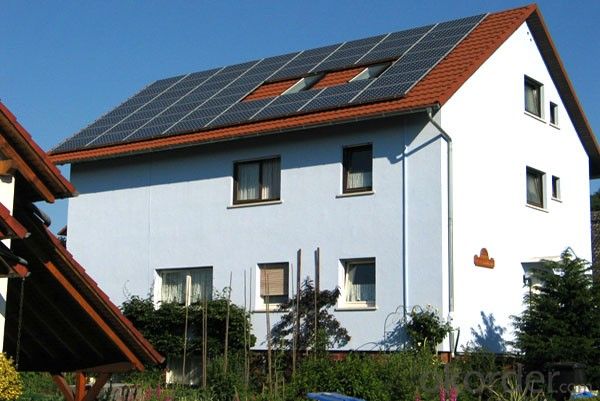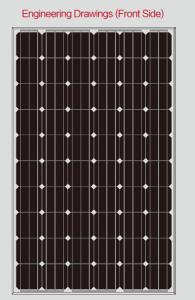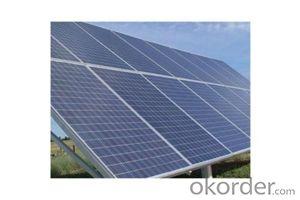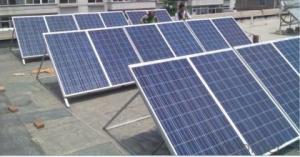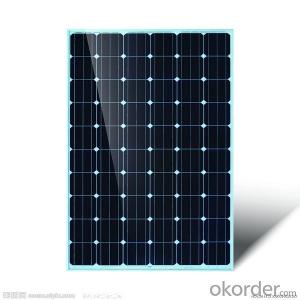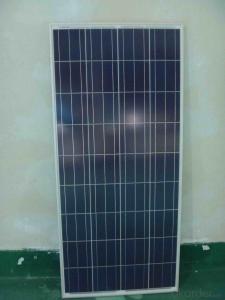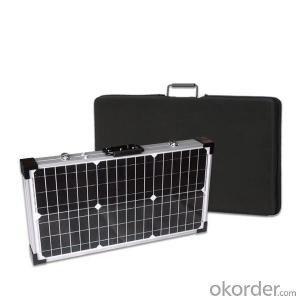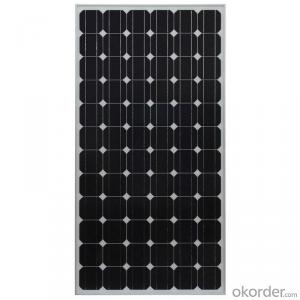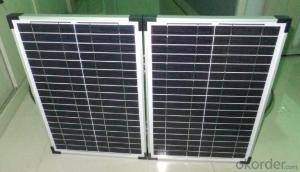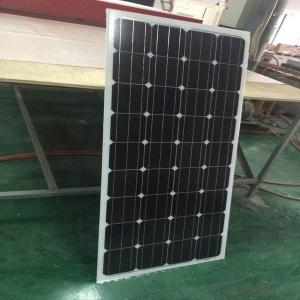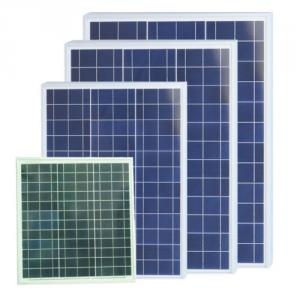120w Mono Solar Panel Made in China for Sale - Solar Panels Tucson
- Loading Port:
- Shanghai
- Payment Terms:
- TT OR LC
- Min Order Qty:
- 1000 watt
- Supply Capability:
- 1000000 watt/month
OKorder Service Pledge
OKorder Financial Service
You Might Also Like
Specification
Product Description
Solar module/panel with high efficiency solar cells
Strong, lightweight aluminum frame design with reinforced sealing and load hold to prevent freezing and warping, and stand against high wind.
Under Standard Test Conditions(STC): Irradiance of 1000W/m2, Am1.5 and 25º C cell temperature.
Mechanical Characteristics
Dimensions: 670mm(L) x 1150mm(W) x 35mm(H)
Weight: 12.5kg
Solar Cells: Polycrystalline solar cells, 36 cells
Construction: Front: High-transmission 3.2mm tempered glass; Encapsulate: EVA; Back: TPT
Frame: Clear anodized aluminum alloy Color: Silver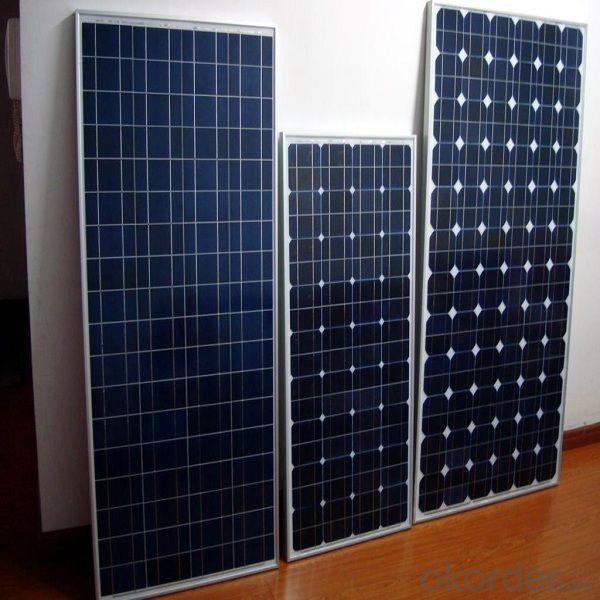
Product features:
1. The modules use high-quality imported polycrystalline or monocrystalline solar cells;
Enclosed by high-rigidity tempered glass, with excellent light transmittance and output performance;
2. Surface treated with reflection-reducing process, increasing the light absorption.
Back sealed with anti-aging EVA, resistant from moisture and corrosion.
3. The efficiency of our monocrystalline solar cell is over 17%, and polycrystalline panel is over 16%. We stipulate, the allowance of each panel's rated power has to be positive. Each panel is strictly tested before leaving the factory.
4. Our solar panel is designed with a lifetime of 25 years, and guaranteed that the power decline less than 10% within 10 years, and 20% within 20 years.
| Performance | |
| Rated Power[Pmax] | 120W |
| Power Tolerance | ± 5% |
| Nominal Voltage | 17.21V |
| Design Life | 25 years |
| Electrical Characteristics | |
| Maximum Power [Pmax] | 120W± 5% |
| Maximum Power Voltage [Vmp] | 17.21V± 3% |
| Maximum Power Current [Imp] | 6.97A± 3% |
| Short-Circuit Current [Isc] | 7.71A± 3% |
| Open-Circuit Voltage [Voc] | 21.96V± 3% |
| Current Temperature Coefficient | 0.08%/º C |
| Voltage Temperature Coefficient | - 0.32%/º C |
| Power Temperature Coefficient | -0.38%/º C |
- Q: Which is more efficient at producing energy? Reference(s) would be nice, but not required.
- Of course solar panels
- Q: Can solar panels be installed on wearable devices?
- Yes, solar panels can be installed on wearable devices, but their effectiveness may be limited due to the small surface area available for solar absorption. Additionally, the amount of energy generated may not be sufficient to power the wearable device continuously. However, advancements in solar technology may make it more feasible and efficient in the future.
- Q: i have a 2v 2a solar panel that i want to use to charge a 2v battery .Have found out that i need a charge controller so i don't over charge the battery.I have found a cheep one its 2v but 7a will it still work ?All-so im planing on running a 2v water pump off the battery with a timer,its for watering my garden.Will the timer have to be 2v as well ?any help on this would be greatly appreciated thanks .
- The charger will accept whatever current is necessary from the solar panel up to 7A. It's not like the solar panel will force 2amps into the charger/battery -- the charger will control the current going to the battery. I question whether or not the 2V panel will actually charge the battery, though, because in order to charge a standard lead-acid 2V battery you need to have about 4.5 volts applied to the terminals. Perhaps the charger has a boost circuit -- I don't know without looking at it or knowing the brand/model number, etc. The timer must be 2VDC, but, if you only have a timer that is rated for 20VAC, you can buy a small inverter that will take 2V and supply the necessary 20VAC. An inverter rated for 20 to 50 Watts should be sufficient. These usually cost under US$25. .
- Q: How do solar panels affect the property's community engagement?
- Solar panels can positively impact a property's community engagement by promoting sustainability and renewable energy. They serve as a visible and tangible example of the property's commitment to reducing its carbon footprint, which can inspire others in the community to adopt similar practices. Additionally, solar panels often generate excess energy that can be shared with the community, fostering a sense of collaboration and local energy independence.
- Q: Can solar panels be installed on a mobile home?
- Yes, solar panels can be installed on a mobile home. In fact, mobile homes are well-suited for solar installations due to their compact size and portability. Installing solar panels can provide mobile homeowners with an eco-friendly and cost-effective alternative to traditional energy sources.
- Q: Are solar panels safe for the environment?
- Yes, solar panels are safe for the environment. They produce clean and renewable energy by converting sunlight into electricity without emitting harmful greenhouse gases or pollutants. Additionally, the manufacturing process of solar panels has become more sustainable over time, reducing their environmental impact.
- Q: What is the working principle of solar panels?
- the inorganic salts such as gallium arsenide Ⅲ-Ⅴ compounds, cadmium sulfide, copper indium selenium and other multi-compounds as the material of the battery;
- Q: I have heard a lot about solar panels and I want to know how these solar panels works and is it really possible to generate electricity using solar panels. And what is the cost of getting a solar panel installed?
- Solar okorder
- Q: For part of a school project how would I charge a car battery with a solar panel? The panel is 48V and 6A. This needs to be low budget so I can't buy an expensive controller, Is that the only way or are there other ways of doing it?
- 48 volts is rather uncomfortable. I would be inclined to modify the panel by cutting traces to give me a number of 5 volt sets. Most PV cells output about 700 mV, but check to see what yours does. Measure one cell, or count the number of cells and divide into the panel voltage. If you work with the 48 volt output, you are throwing 70% of the output away. The classic method of charging a lead/acid battery is to use the 0 hour rate...a 200 AH battery is charged at 20 amps. However if the charge is to be near continuous during daylight, I think I would go a little lower...say 5 amps in order to be kind to the battery. I note that your panel has a 6 amp output, so when you modify it, it should be able to deliver about 8 amps. A useful trick is to use car headlamp bulbs in series. The filament has a high positive thermal coefficient of resistance, and tends to act as a current regulator. In this case, I would use two dual filament bulbs with their filaments in parallel, arranged in series.
- Q: Is this true in a dc system? What if my battery current is negative?
- complex task. browse in google and yahoo. that could help!
Send your message to us
120w Mono Solar Panel Made in China for Sale - Solar Panels Tucson
- Loading Port:
- Shanghai
- Payment Terms:
- TT OR LC
- Min Order Qty:
- 1000 watt
- Supply Capability:
- 1000000 watt/month
OKorder Service Pledge
OKorder Financial Service
Similar products
Hot products
Hot Searches
